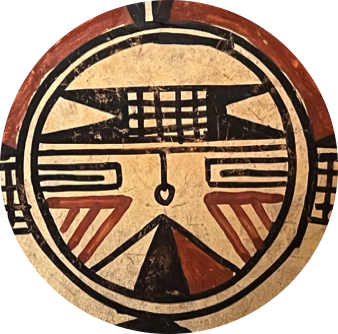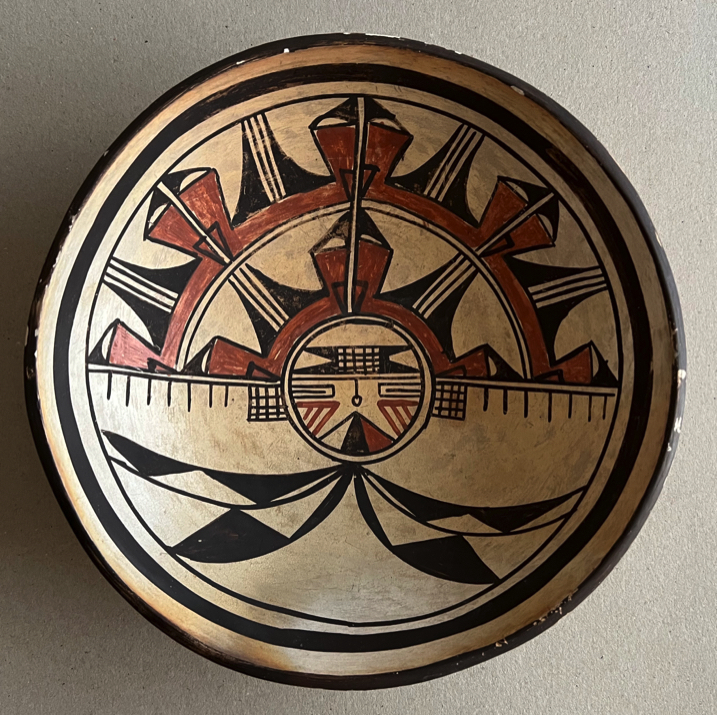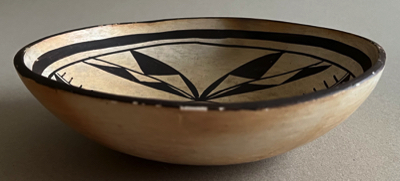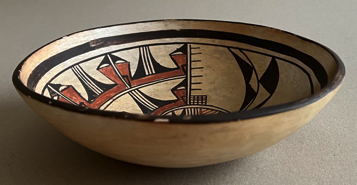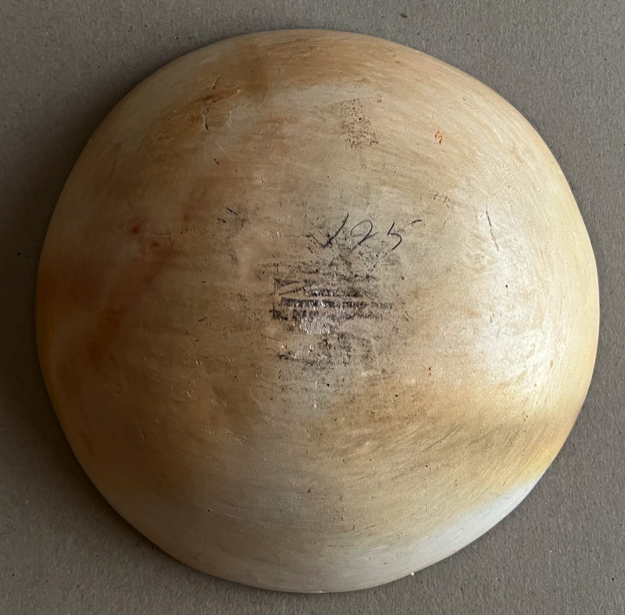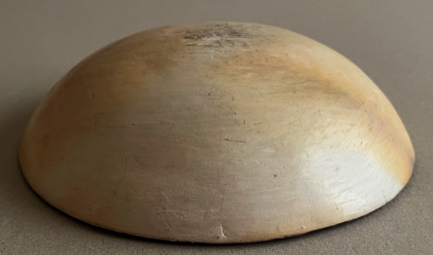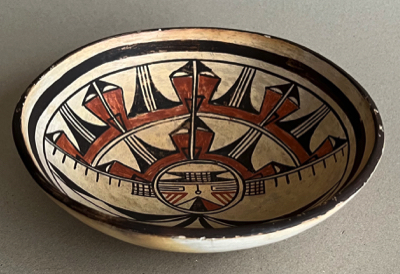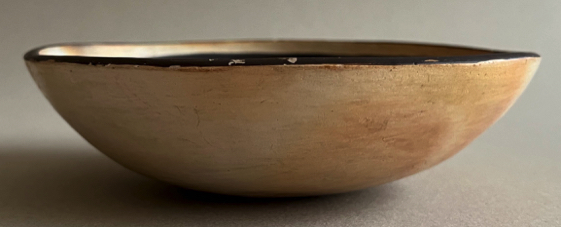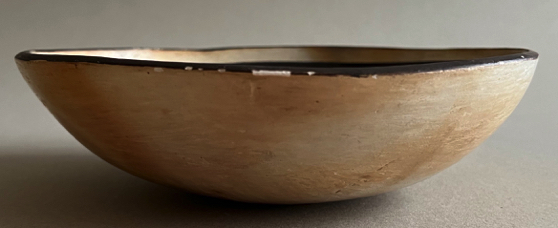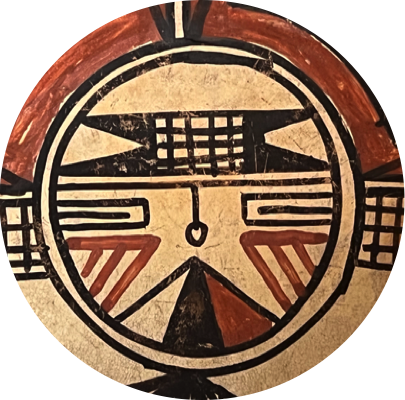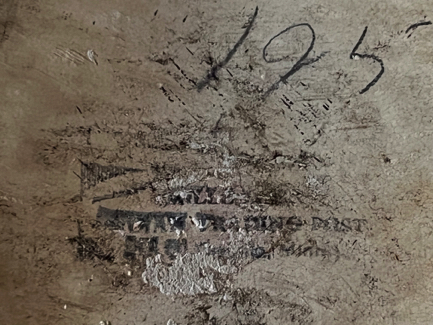
© 2010-2022 by Fine Arts of the Southwest, Inc. All rights reserved.
Unauthorized reproduction or use is strictly prohibited by law.
A very fine historic Hopi polychrome
pottery bowl with an image of Polikmana Kachina
by Nampeyo of Hano, c.1895-1900
This is the great Hopi pottery Matriarch, Nampeyo (1858-1942) working at the top of her form making a perfectly potted, perfectly polished, perfectly painted and perfectly fired small gem of a bowl bearing the image of the beautiful Hopi Polikmana or “Butterfly Maiden” Kachina.
The painted kachina image on the bowl’s interior is most precisely and delicately and sensitively rendered in a
deep rich brown-black and the streaky red paint characteristically found on Nampeyo’s pottery. The kachina image is very nicely surrounded and accentuated by double unbroken black framing lines. The image fills the bowl using the curved surface of the vessel walls and the depth of the vessel to great artistic effect providing a dynamic perspective and sense of motion rather than simply presenting a flat image on a flat surface.

"Polik-mana or Butterfly Maiden is a kachina, or spirit being, in Hopi mythology. Every spring she dances from flower to flower, pollinating the fields and flowers and bringing life-giving rain to the Arizona desert. She is represented by a woman dancer at the yearly Butterfly Dance, a traditional initiation rite for Hopi girls. The rite takes place in late summer, before the harvest, to give thanks to Polik-mana for her spring dance. Hopi girls participating in the Butterfly Dance wear ornate headdresses called kopatsoki."
-Quotation source and © Wikipedia

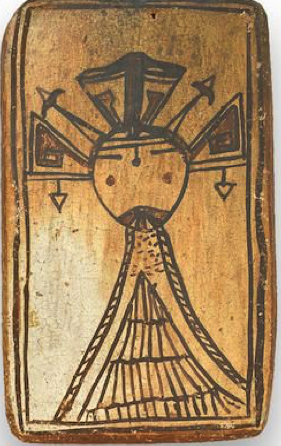
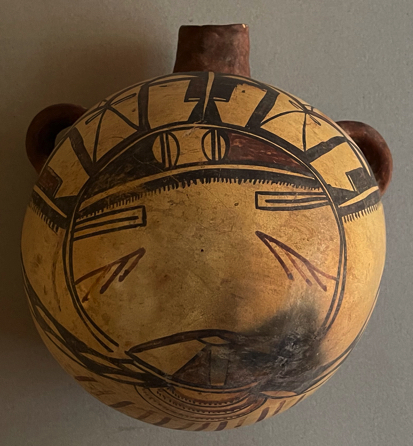
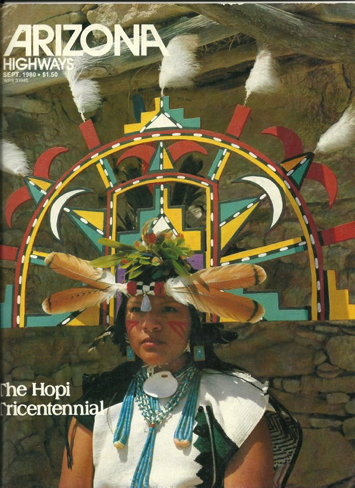
At left, a Polikmana kachina drawing, c. 1899. J.W. Fewkes, Bureau of American Ethnology, Smithsonian Institution, Washington. D.C. At right, a Hopi Butterfly Maiden Kachina Dancer pictured on Arizona Highways Magazine, 1980.
Beginning around the late 1880's and early 1890's, encouraged and likely commissioned by Hopi Indian trader, Thomas Varker Keam, working in conjunction with The Fred Harvey Company and others, Nampeyo and other Hopi potters began making pottery pieces decorated with a variety of Hopi Kachina imagery. At left, a large Hopi storage jar by Nampeyo, c. 1895, formerly collected by prominent Santa Fe Indian trader J.S. Candelario, at center, a Hopi pottery tile, c. 1890, at right, a Hopi pottery canteen by Nampeyo, c. 1890. To view our website listing of this canteen, please click here.
The bowl has the beautiful creamy bone-white yellow surface color which indicates a very high-temperature firing with lignite coal, the traditional ancient Hopi method of firing pottery dating back to the Sikyatki Period of 1375-1625 A.D. Nampeyo revived and perfected this difficult firing method to great effect. The bowl has just
a very slight crackle to areas of the interior surface indicating an original time frame of very late in the Polacca-type period, around 1895-1900 in the process of transitioning to the later Hopi or Hano Polychrome type.
The bowl measures 8” in diameter and is 2 1/2” in height. It is in generally excellent original condition, particularly for its century-and-a-quarter or so of age, with a few small areas of paint abrasion around the
rim and a slight amount of abrasion on the bottom. There are no cracks, no significant chips and a thorough examination under Ultraviolet light reveals no evidence of restoration or overpainting. There is an interesting
old stamped ink inscription on the bottom of the bowl which says “____Trading Post” and then “Minn” which might indicate Minnesota. Unfortunately, the name of the trading post has been smeared and obscured and we cannot make it out. There is also an old-fashioned handwritten in pencil price of $1.25.
Nampeyo was never an opera singer but she hit a beautiful perfect-pitch high note with this harmonious
and precious pottery jewel.
SOLD
